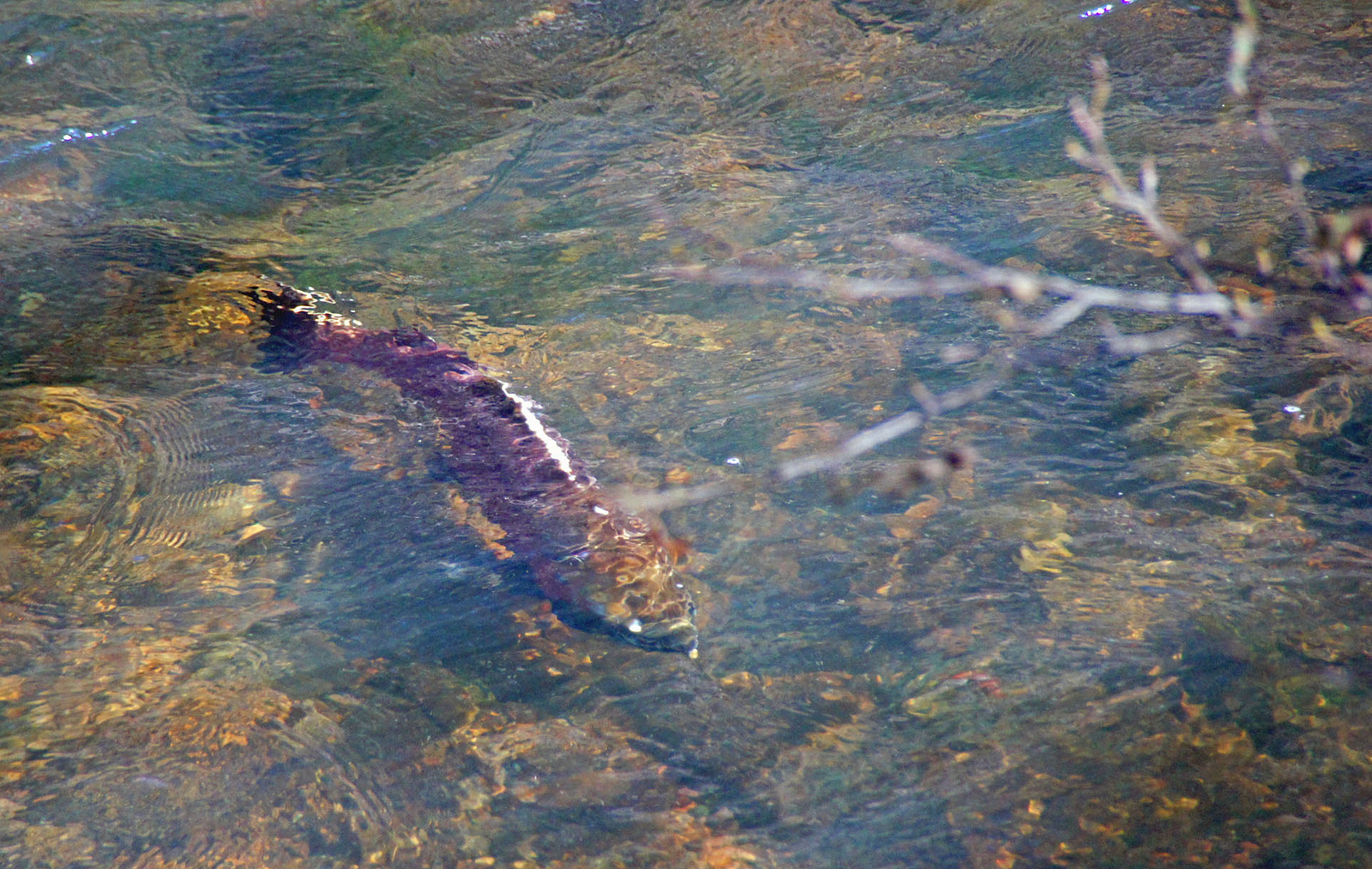San Gregorio Creek Habitat Enhancement Project
San Gregorio Creek Habitat Enhancement Project- Apple Orchard Project
A common misconception is that a creek should be free of fallen trees or logs. Actually, this “large woody debris (LWD)” provides a lot of benefits for the creek ecosystems. When trees fall into a creek they alter the streamflow to create pools where young fish live and hide and sort gravel where adults can rest and lay their eggs. Trees and branches also form cover to protect fish from predators. By keeping and increasing natural debris in waterways to increase habitat, we can help young fish survive. Other wildlife, such as the California red-legged frog and western pond turtle, benefit as well. The pools attract aquatic insects, which are food for many species.
In addition to benefiting wildlife, natural debris in creeks helps maintain natural stream function by slowing the flow of water, which stabilizes the stream channels and banks, and promotes groundwater recharge for drought relief in other times of the year. Contrary to what we are often told, natural debris in the creek can actually reduce flooding by catching wood that would otherwise flow downstream all at once creating larger logjams, and by holding back sediment that would accumulate downstream.
The RCD worked closely with Midpeninsula Regional Open Space District (MROSD) to complete this project in 2016 at MROSD’s Apple Orchard property in San Gregorio. 13 habitat structures were installed throughout about a half mile of San Gregorio Creek that was previously lacking important features that provide good habitat. As a result of this project, 2,200 feet of San Gregorio Creek have improved habitat for fish (especially coho and steelhead), including eight new pools, three enhanced pools, and 13 areas of enhanced winter refuge.
This project is now in monitoring phase. Project monitoring includes physical surveys such as longitudinal profiles and cross-sections to determine pool scour depths, pool area, amount of cover contributed, and aggradation of streambed material. Photo monitoring and pebble surveys are also utilized. This monitoring data comes together to describe the physical changes to the creek as a result of the habitat structures.
Partners:
- Midpeninsula Regional Open Space District (MROSD)
- Peninsula Open Space Trust (POST)
Funders: This project was made possible through a grants from the CA State Coastal Conservancy’s Integrated Watershed Restoration Program (IWRP) (planning and design) and CA Department of Fish and Wildlife’s Fisheries Restoration Grant Program (implementation). Matching funds were provided by MROSD and POST.
RCD Contact: Joe Issel



